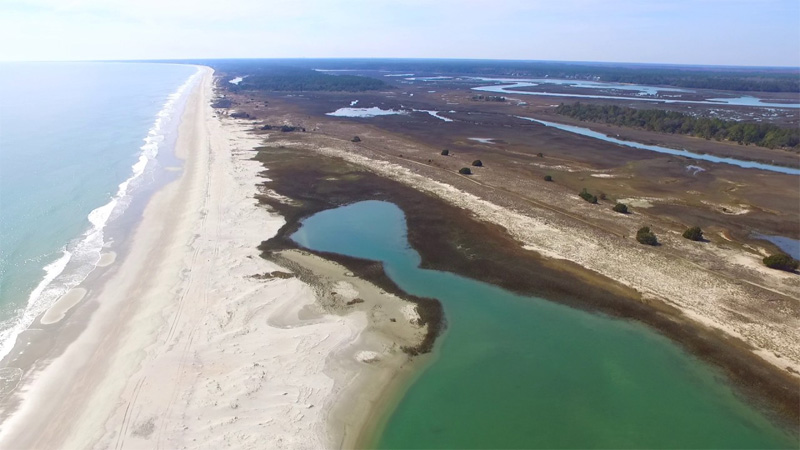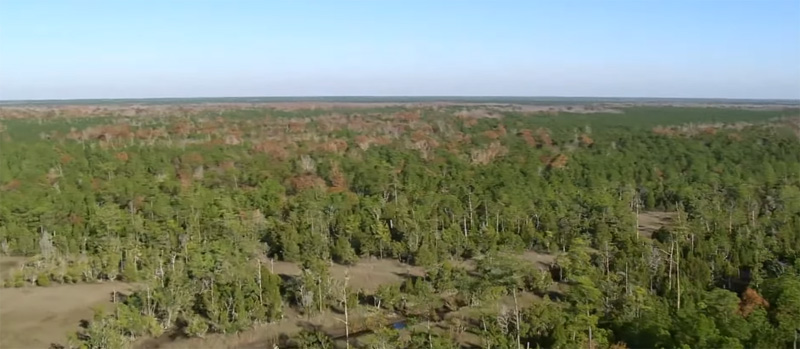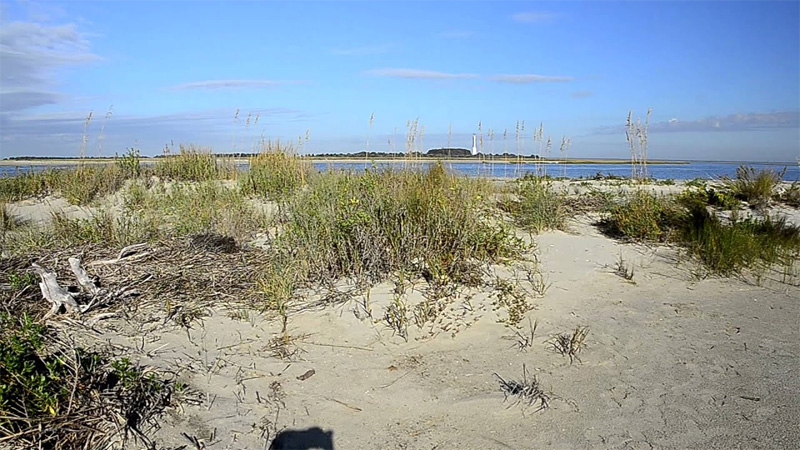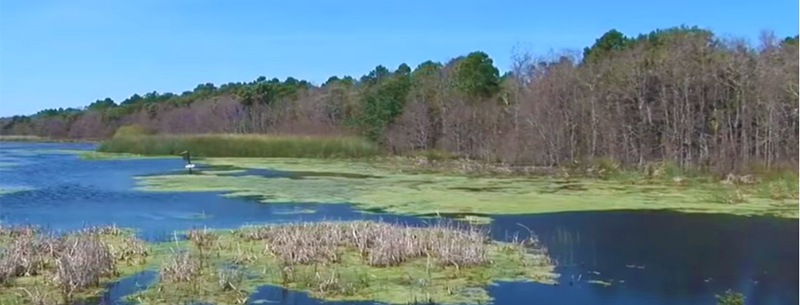Myrtle Beach State Park
Beautiful beaches within walking distance of your campsite, yet still being close to all the action of Myrtle Beach? Two great reasons that State Park was one of those places we just had to visit – and it doesn’t disappoint.
Myrtle Beach State Park sits just north of Myrtle Beach Resort. They have everything you’ll need for a day outdoors in Myrtle Beach. Take your poles because there’s a fishing pier, and you can even stay the night at one of their cabins. There’s a mini-store for essentials, so you won’t even have to leave the park. Eat lunch on one of their numerous picnic tables, hike one of the hiking trails, or go camping and sleep as you’ve never slept before, under the stars and the warm Gulf Stream air.
843-238-5325 4401 South Kings Highway ($3 entrance fee for adults).

Huntington Beach State Park
Huntington Beach State Park has two campgrounds and two beaches plus much much more.
Huntington Beach State Park is one of the finest best bird-watching sites on the East Coast. Like castles? This state park has on its grounds the historic “Atalaya” a National Historic Landmark castle. Built in the 1930s as a winter retreat by an eccentric wealthy couple, Atalaya is an odd architectural vision, modeled after Spanish Moorish castles of an earlier age, but strangely incongruous on the beaches of South Carolina.

The place was taken over by the US Army during World War II and used only a few years after the war by the couple. It’s now a beloved, crumbling centerpiece of this state park near Myrtle Beach, and worth a trip if you want to see something out of the ordinary. It lends a sense of mystery and uniqueness to the beach in this area, which you won’t find anywhere else on earth. There is a very popular arts and crafts festival every year at this park, a super event for picking up gifts.
843-237-4440 3 miles south of Murrells Inlet on US Highway 17 ($5 entrance fee for adults)
Francis Marion National Forest
Francis Marion National Forest isn’t technically on the Grand Strand, but it is very close, located just twenty miles north of Charleston. There are a quarter of a million acres of national forest containing more than 120 miles of trails for hikers, cyclists, or canoers. The ecology moves inland from the Atlantic Ocean to swampy areas to sand fidges and finally pine forests.

You’ll find cypress and palmetto forests, as well as loblolly pines that grow and grow to four feet before ever producing any branches. There are carnivorous plants here too: the pitcher plant exists in the forests of this region, as well as the American alligator, the red-cockaded woodpecker, and the bald eagle. Make sure to stop at the Sewee Visitor & Environmental Education Center for maps and ecosystem information. You can also learn about the Cape Romain National Wildlife Refuge here.
The swampy, cypress-covered Francis Marion National Forest was once an escape route for a controversial figure in America’s fight for independence.
Cape Romain National Wildlife Refuge
Cape Romain Refuge on the South Carolina coast is a fascinating expanse of barrier islands, salt marshes, coastal waterways, sandy beaches, water impoundments, and maritime forests.
The Cape Romain National Wildlife Refuge is 64,000 acres of wetlands, salt marshes, and beautiful, primitive beaches, and shares the same visitor center as the Francis Marion National Forest. Bird watchers will love this area, as it is a major stop on the migratory path of millions and millions of birds each year…the Atlantic Flyway. Loggerhead turtles lay their eggs in the sand on the beaches. This is a rare, preserved bit of wild South Carolina Atlantic coast, thanks to the U.S. Forest Service.

